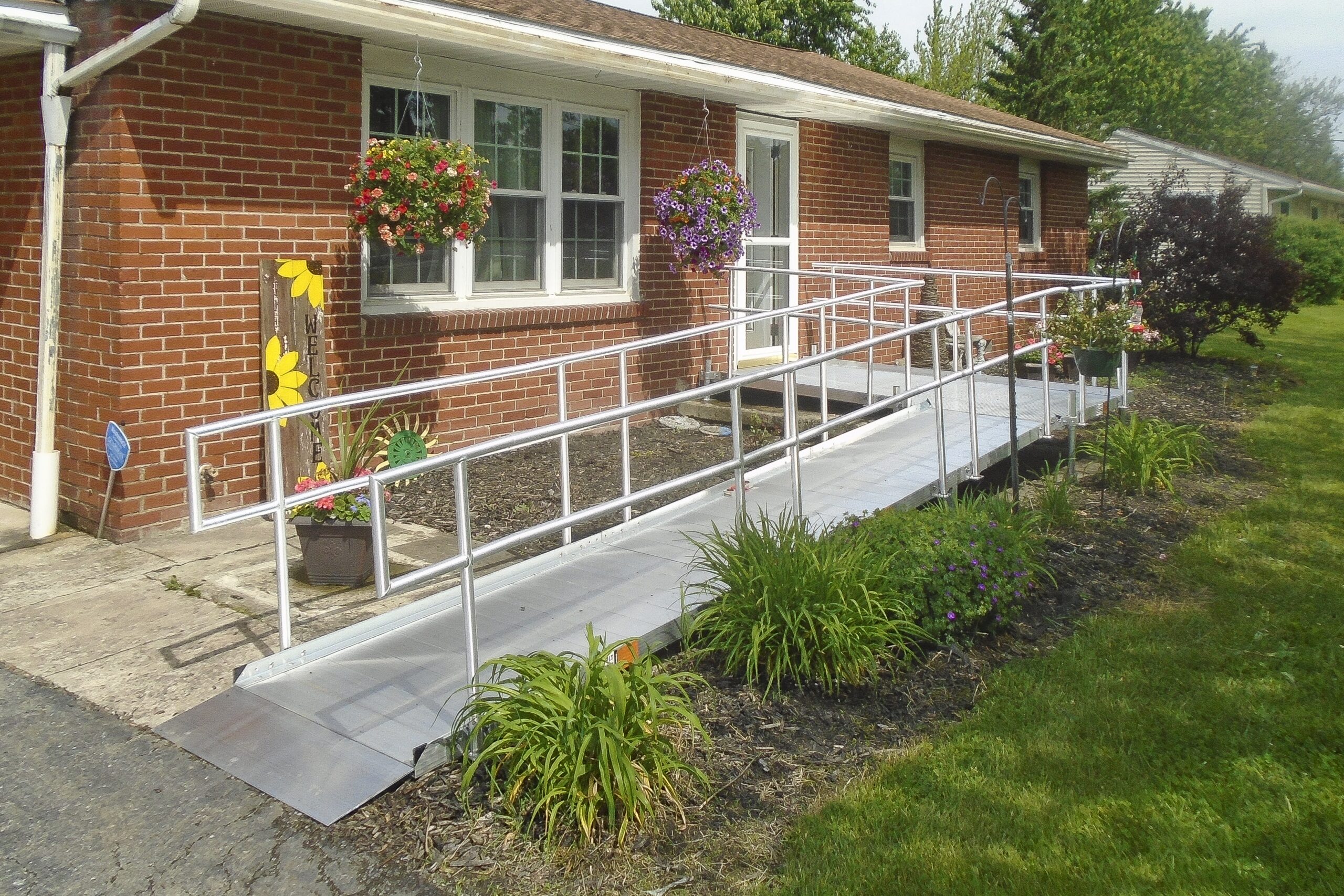No products in the cart.
Choosing the Best Wheelchair Ramp


At some point in our lives, we will require the use of an access ramp. Whether it is following a surgery, a semi-permanent condition, or something that is a long-term solution for a senior aging in place, a wheelchair ramp is the solution to provide that secure access.
Wheelchair ramps have other names they are know as such as handicap ramp, mobility ramp, doorway threshold ramp, or a scooter ramp. Regardless of what you may call it, these ramps are placed over steps, uneven surfaces, gaps, or inclines to provide access for anyone using a rollator, wheelchair, scooter, walker, cane or other assistive mobility device.
When it comes to choosing the right ramp, there is not a one-size-fits all. Wheelchair ramps come in a multitude of designs and styles for homes and businesses as well as indoor and outdoor applications.
Wheelchair ramps are designed with different materials, lengths, features, and slopes for specific purposes. These guidelines explain what makes each type of wheelchair ramp unique, how to determine which model is right for your needs, and what criteria you should use when shopping for a wheelchair ramp.
Every location, person and assistive mobility device will have different needs and factor to consider when choosing a ramp. In this article we will cover these 5 questions to consider when choosing a ramp:
- Would a Doorway Threshold Ramp be a Solution?
- Which Assistive or Mobility Device will be used?
- Do I need a Portable, Semi-Permanent or Permanent Wheelchair Ramp?
- What type of Material should my Ramp be made of?
- Installation: DIY or have a Professional Installation?
Would a Doorway Threshold Ramp be a Solution?
Transitions through doorways and raised landings may seem like a small inconvenience, but for someone using a walker, wheelchair, rollator, or anyone having difficulty lifting their feet it can pose a big problem. The solution to this problem is a Doorway Threshold Ramp. These ramps provide a transition to ease small slopes. Threshold ramps are available in aluminum or recycled rubber, both with a slip-resistant surface.
Which Assistive or Mobility Device will be used?
When deciding on which ramp is best for you the first thing to consider is the type of mobility device that will be used on the ramp, and whether this will change over time. If you are a patient in recovery, you may be using a wheelchair now, but as you heal you may progress to using a rollator, and then a cane. If you know that you are in recovery and you will gain your mobility back, a Portable Ramp or Semi-Permanent Ramp could be the best option for you.
If you know that your condition will be more permanent such as progressing from a cane to a walker or a walker to a wheelchair then investing in a more permanent Modular Ramp may be the best solution.
Do I need a Portable, Semi-Permanent or Permanent Wheelchair Ramp?
A Portable Ramp are ramps that are designed to be folded and easily moved from location to location. They are lightweight and easy to be set up or put away.
A Semi-Permanent Ramp are one-piece aluminum ramps that are available up to 10 feet in length. These ramps are quick and easy to install and are available with or without handrails. Examples of these type of ramps is the Butt Ramp or Gateway 3G Ramp. Still lightweight, a Semi-Portable Ramp can be removed when not needed.
Modular Ramps are ramps that can be combined to create any length and with platforms can be made into any configuration your home may need. Sections of these ramps can be added or removed to customize it around buildings or a property’s landscape.
What type of Material should my Ramp be made of?
When it comes to the material of a ramp everyone has their own preference.
Aluminum Ramps are the lightest and easiest ramps to move. They are designed with legs that can be adjusted for a customized fit and can be modified of your needs change over time. They require little to no maintenance or upkeep and are slip-resistant.
Wooden Ramps are made of hardwood and often require anchors. Once the ramp is built it often can not be moved or adjusted without damage. Ramps made of wood requires maintenance to keep the wood from rotting or breaking down over time. Another consideration is wood tens to get slippery when wet, so an anti-slip surface should also be considered.
Piedmont Ramp Solutions offer the best of both Aluminum Ramps and Wooden Ramps with a Wood/Aluminum Hybrid Ramp. These Ramps from Rampit USA has an Aluminum frame and legs with a tread/surface and handrails made of wood.
Installation: DIY or have a Professional Installation?
Aluminum Wheelchair Ramps are simple to install. Some consumers are able and comfortable in following directions for assembling ramps. Modular ramps take more effort and time to install but can be self-installed by someone who likes or is not intimidated in a DIY project.
Some are not a DIYer or not physically able to assemble and install a ramp. Having a professional install your ramp system for you takes the work out of your hands. For Modular Ramps, especially once that includes multiple platforms having a pro complete the installation is strongly recommended.
